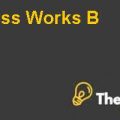Why should the treasury issue callable debt?
Treasury should issue callable debt in order to protect itself from the interest rate drops. If the callable debt is issued at a higher rate and after that the interest rate decreases, then the Treasury can call the debt and refinance it at a lower interest rate. In this way, the treasury saves itself from future higher interest payments which will be the scenario in case of non-callable debt. So, this option of flexibility to the treasury is very beneficial to it as it does not need to pay higher interest payments for the full tenure of the debt till maturity.
Moreover, the bond owner is usually presented with a premium upon exercising the bond callable feature by its issuer. The callable bonds are usually priced lower as compare to non-callable bonds that would be another reason for issuing callable debt.
Although callable debt has higher interest rates as compared to the non-callable debt, the total cost of borrowing to the treasury is usually lower as compare to non-callable debt if the call-ability feature is exercised. This is because of the reason that non-callable debt has to pay interest payments over the tenure of the debt, whereas callable debt can refinance at lower rates if the call feature is exercised.
This forces the treasury of the issuer to make efficient decisions about future investments because of the above reason. The issuer saves money for the future through exercising the call-ability feature as the interest payments will be reduced.
The treasury can issue callable debt as compared to non-callable debt as the callable one has a same credit risk over the period of the debt as the call-ability feature does not affect the ability of the issuer to repay its debt.
The treasury can risk itself issuing callable debt because it has the required specialized staff who can deal with the complexities arising on the accounting front while issuing callable debt.
If the treasury perceives that its investment opportunities will be less favorable or poorer in the future and in technical terms, the future investment projects have a negative NPV, then the Treasury will issue the callable bond in place of non-callable bond. The reason may be that the bad future investment climate for the Treasury forces it to call off the debt and hence reduce its interest payments. If the Treasury perceives the future investment climate to be favorable, then it will issue the non-callable debt.
The treasurer of the issuer faces a trade off at the time of issuing the debt whether to issue debt with the callable or non-callable feature. The reason is that the trade off exists because if the future investment climate turns out to be bad, then the treasury will save the agency cost of debt. But, if the investment climate turns out to be favorable, then the issuer will face the refunding costs.
If the treasury wants to issue longer duration debt, then attaching callable feature is very feasible because in longer durations, interest rates tend to fluctuate and the issuer will be able to take benefit of the declining interest rates.
Arbitrage in the Government Bond Market Case Solution
If the treasury wants to issue large denomination of debt, then the call-ability feature will be very feasible to attach with the debt because a small fluctuation in the interest rates will lead to great savings for the issuer in terms of interest payments.
The treasury should issue the debt with callable feature that will result in tax savings for the issuer (company or government). These tax savings are dependent on the tax environment at the time of issuance of callable debt or at the time of calling this debt back in order to benefit from the prevailing interest environment.
The treasury should issue callable debt in the scenario where a large sum of investment is not required in the future and the company can scale back the bonds issued through the call - ability of the debt.................................
This is just a sample partial case solution. Please place the order on the website to order your own originally done case solution.












